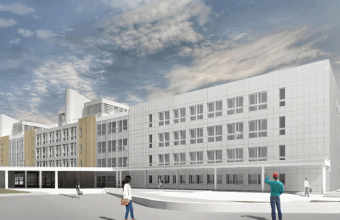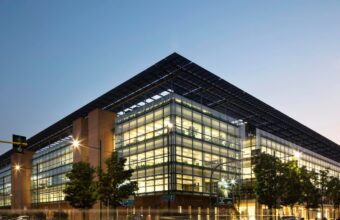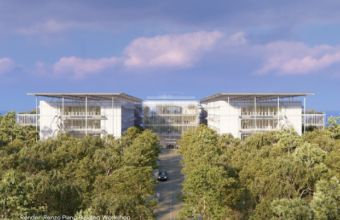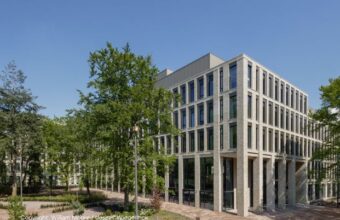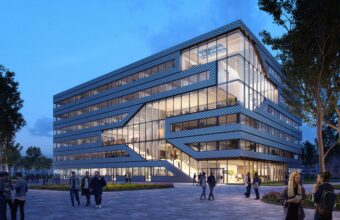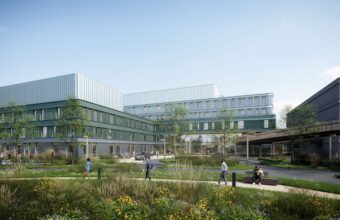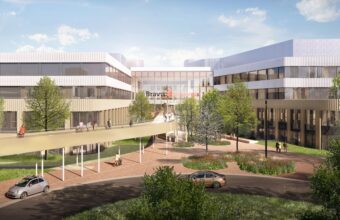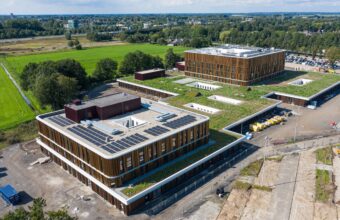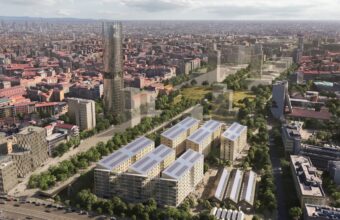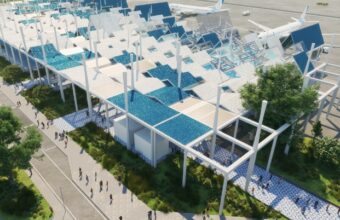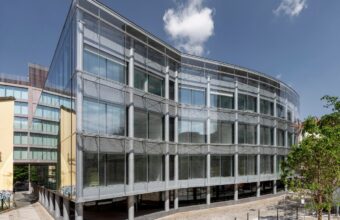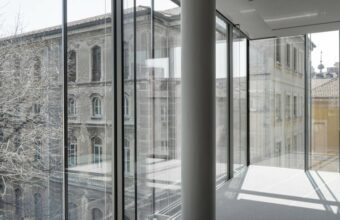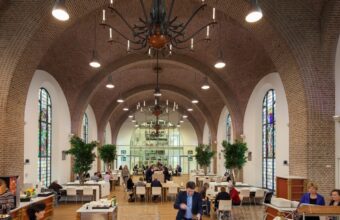Building Physics & Acoustics
We design healthy, sustainable buildings that enhance wellbeing, helping users feel more energetic and more productive. In hospitals, an optimal indoor climate supports patient recovery, while in museums, it safeguards valuable objects. Through thoughtful building physics design, architecture and installations work seamlessly together in a smart, sustainable way,
Deerns advises clients in Public and Commercial Real Estate, Health Care, Airports, Electronics, Life Sciences and Data Centres. Comfort, health and energy efficiency are at the heart of our work. Whether it’s creating spaces for relaxation in airports, ensuring comfort in cleanrooms, or providing energy advice for heritage buildings, we deliver smart, tailored solutions.
Our expertise spans new construction, renovations and historic properties, with building physics and acoustics services often integrated with our Fire Safety consultancy.
Putting the user first
Our clients recognise the importance of a healthy indoor climate in spaces where people live, work, heal and come together. Achieving the right balance between sustainability and wellbeing is essential. In hospitals, for instance, a healing environment can accelerate patient recovery, with elements such as daylight, air quality and acoustics playing a vital role.
Balancing production and wellbeing
In some environments, production comes first. Even in these settings, we create healthy workplaces without compromising operations – ensuring comfort and performance go hand in hand.
Harnessing nature's potential
Passive building strategies maximise daylight, natural ventilation and insulation to reduce energy use. This results in a comfortable indoor environment with fewer mechanical systems, lower costs, and a reduced ecological footprint.
Expert guidance for healthy buildings
Our building physics and acoustics experts support you with all aspects of temperature, air quality, moisture, daylight, sound, vibrations and airtightness. We focus on creating buildings that are comfortable, healthy, and quiet, both indoors and out. This involves careful attention to insulation, ventilation, acoustics, wind and solar effects, and the prevention of unwanted vibrations and airflows.
Using advanced measurement tools and simulation software, we assess sound levels, vibrations, airtightness, lighting, temperature, moisture, and the overall performance of the building envelope. This comprehensive approach ensures you receive customised, accurate advice every time.
+ 50
Innovator
The art
Worldwide
At Deerns, we leverage smart design technologies to maximise building performance. Using parametric design, we quickly generate dozens of design variants, which we then evaluate for energy efficiency, daylight availability and occupant comfort. Computational Fluid Dynamics (CFD) simulations provide precise insights into airflow patterns – helping to prevent wind disturbances at entrances and to optimise indoor climates in cleanrooms.
The façade is a key component in this process. Through expert façade engineering, we integrate insulation, acoustics, daylight and airtightness into designs that are both technically feasible and visually appealing.
Our building physics and acoustics consultants also provide expert advice on:
- Temperature, humidity and air quality control
- Preventing unwanted airflows and radiation asymmetry
- Building envelope performance: thermal and acoustic insulation, moisture management, and airtightness
- Strategic use of daylight, sunlight and shading inside and around buildings
- Minimising solar reflection and wind noise in the vicinity
- Mitigating external noise from traffic, industry and mechanical systems
- Soundproofing façades, internal airborne and impact sound insulation, installation noise, and room acoustics (including controlling unwanted reverberation)
- Preventing and managing unwanted vibrations and vibration levels
" Our museum projects highlight our expertise in building physics and acoustics.
Frequently asked questions
What measurement and simulation tools do you use?
For every project, we combine practical on-site measurements with advanced simulation software to provide data-driven, tailored advice. Our range of measurements and investigations includes:
- Acoustic measurements (airborne noise, impact noise, room acoustics, speech privacy)
- Vibration analysis
- Airtightness testing (blower door tests) and smoke tests
- Long-term monitoring of temperature, humidity and CO₂ levels
- Light measurements (illumination and luminance)Façade inspections (thermography, moisture assessment, surface temperature, endoscopy)
What role does building physics play in historic buildings?
Building physics is especially important in historic buildings, where many complex factors come into play. When improving sustainability, we carefully explore how to enhance comfort and energy performance without damaging historic materials. Our focus is on managing moisture, controlling temperature variations, and understanding material behaviour.
What role do building physics and acoustics play in hospitals?
Our clients understand the vital importance of a healthy indoor environment in buildings where people live, work, heal and gather. Striking the right balance between sustainability and health is essential. In hospitals, a healing environment supports patient recovery, with factors such as daylight, air quality and sound playing key roles.
Can building physics contribute to energy savings?
Absolutely. By smartly designing with daylight, insulation, airtightness and solar gain in mind, we minimise energy consumption without compromising comfort. To find the optimal balance, we use parametric design and dynamic simulations.
What are the benefits of good room acoustics?
Good acoustics enhance concentration, communication and wellbeing. In offices, educational or healthcare settings, good acoustics prevent unwanted reverberation and background noise. We provide guidance on materials, layout, and systems to ensure acoustic comfort.



